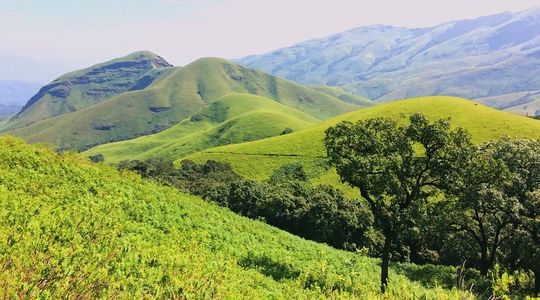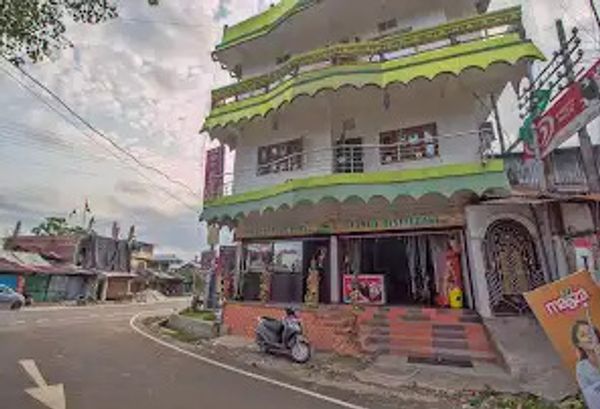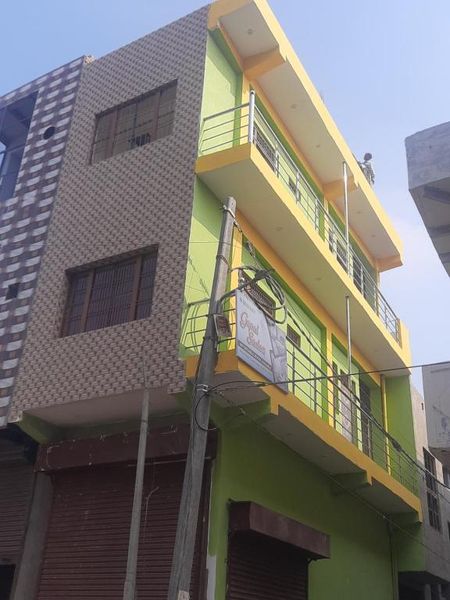Kudremukh National Park: A Hidden Paradise in the Western
 Palakshi Meharwal
22 Feb, 2025
8 mins read
620
Palakshi Meharwal
22 Feb, 2025
8 mins read
620

Nestled in the heart of the Western Ghats, Kudremukh National Park is a pristine wilderness that beckons nature lovers, trekkers, and wildlife enthusiasts. Spread across 600 square kilometers, this biodiversity hotspot is a haven for lush greenery, diverse fauna, and breathtaking landscapes. With its rolling hills, dense forests, and cascading waterfalls, Kudremukh stands as a testament to nature’s unspoiled beauty.
A Glimpse into Kudremukh’s Rich Biodiversity
Kudremukh National Park is home to an extraordinary array of flora and fauna. The park’s name, meaning “horse-face†in Kannada, is derived from a distinctive mountain peak that resembles the shape of a horse’s face.
Flora: A Verdant Wonderland
The region’s tropical wet evergreen forests are adorned with towering trees like rosewood, teak, and eucalyptus, along with an abundance of medicinal plants. The park also features shola grasslands, which provide a distinct contrast to the dense woods and serve as grazing lands for endemic species.
Fauna: A Wildlife Enthusiast’s Dream
Kudremukh shelters a diverse range of wildlife, including tigers, leopards, wild dogs (dhole), and Indian bison (gaur). Birdwatchers can spot over 195 avian species, including the endangered Malabar trogon, great hornbill, and imperial pigeon. If you’re lucky, you might even catch a glimpse of the elusive lion-tailed macaque, an endangered primate found in the Western Ghats.
Best Time to Visit Kudremukh National Park
The best time to explore Kudremukh National Park is during the post-monsoon and winter months, from October to May. The monsoons (June to September) drape the park in lush greenery but also make the trails slippery and challenging. For trekking enthusiasts, December to February offers the most pleasant weather conditions.
Trekking in Kudremukh: An Adventurer’s Delight
One of the major attractions of Kudremukh National Park is the Kudremukh Peak Trek, an exhilarating journey through mist-laden trails, dense forests, and rolling meadows.
Kudremukh Peak Trek: Highlights
- Distance: 18 km (round trip)
- Difficulty Level: Moderate to Difficult
- Duration: 6-8 hours
- Starting Point: Mullodi Village
The trek offers panoramic views of the Western Ghats, lush valleys, and cascading streams. Along the way, trekkers may encounter diverse wildlife and breathtaking scenery, making the experience truly unforgettable.
Other Attractions in Kudremukh National Park
Apart from trekking, visitors can explore several other stunning locations within and around the park:
1. Hanuman Gundi Waterfalls
A mesmerizing waterfall located deep within the forest, Hanuman Gundi Falls is an ideal spot for relaxation and photography. The water tumbles from a height of 100 feet, creating a spectacular natural pool.
2. Kadambi Waterfalls
This easily accessible waterfall is perfect for a quick dip and a refreshing break amid the greenery. The sight of water cascading down rocky cliffs makes for a picture-perfect moment.
3. Lakya Dam
Constructed over the Lakya River, this dam is a serene place offering breathtaking views of the surrounding hills and forests.
How to Reach Kudremukh National Park
Kudremukh is well-connected by road, rail, and air:
- By Air: The nearest airport is Mangalore International Airport (110 km).
- By Rail: The nearest railway station is Karkala (50 km) or Mangalore (110 km).
- By Road: Kudremukh is accessible via road from Bangalore (330 km), Mangalore (110 km), and Chikmagalur (95 km).
Where to Stay in Kudremukh
Visitors can choose from a range of homestays, forest lodges, and resorts near Kudremukh National Park. Popular options include Mullodi Homestay, Kudremukh Nature Camp, and Bhagavathi Nature Camp. These accommodations offer a rustic yet comfortable experience, allowing visitors to immerse themselves in nature.
Conservation Efforts and Responsible Tourism
Kudremukh National Park is a protected area under the Wildlife Protection Act of 1972. Visitors are encouraged to follow responsible tourism practices such as avoiding littering, maintaining silence in wildlife zones, and respecting local cultures. Conservation efforts are ongoing to protect the park’s fragile ecosystem, with initiatives focused on afforestation and wildlife preservation.
Final Thoughts: Why Kudremukh is a Must-Visit
Kudremukh National Park remains one of the best-kept secrets of the Western Ghats, offering an unparalleled experience for nature lovers and adventure seekers. Whether you’re trekking through misty hills, spotting exotic wildlife, or simply soaking in the serene ambiance, Kudremukh promises an unforgettable journey into the heart of nature. If you’re looking for an escape into the wild, this hidden paradise should be at the top of your travel list.
Written By:
Palakshi Meharwal



Hotels at your convenience
Now choose your stay according to your preference. From finding a place for your dream destination or a mere weekend getaway to business accommodations or brief stay, we have got you covered. Explore hotels as per your mood.


